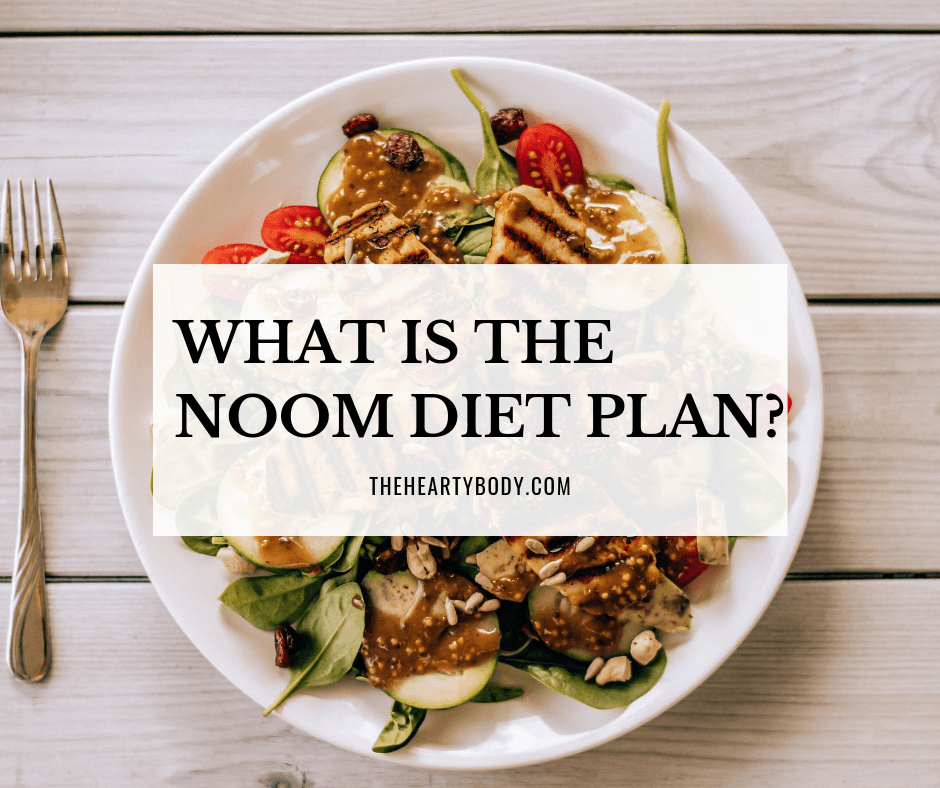Introduction
What You Should Know About the Noom Diet – The Noom Diet is a weight loss program that combines calorie counting with behavioral therapy. It was developed by a team of psychologists, nutritionists, and doctors in 2008.
The Noom Diet is based on the idea that weight loss is not just about eating less and exercising more. It also involves changing your mindset and behaviors around food. The program teaches users how to identify and change the triggers that lead to overeating, and it provides support and accountability through online forums and coaching.
History and Development
The Noom Diet was originally developed as a weight loss program for employees of the Noom company. However, it quickly became popular with people outside the company, and it was eventually made available to the public in 2011.
Since then, the Noom Diet has been featured in numerous media outlets, including The New York Times, The Wall Street Journal, and The Oprah Winfrey Show. It has also been the subject of several scientific studies, which have shown that it is effective for weight loss and maintenance.
Key Principles of the Noom Diet

The Noom Diet is a comprehensive weight loss program that combines a color-coded food system, psychological principles, and community support. These elements work together to create a holistic approach to weight management.
Color-Coded Food System
The Noom Diet classifies foods into three color categories based on their calorie density and nutritional value:
- Green Foods:Low-calorie, nutrient-rich foods (e.g., fruits, vegetables, lean proteins) that can be eaten in large quantities.
- Yellow Foods:Moderate-calorie foods (e.g., whole grains, dairy products) that should be consumed in moderation.
- Red Foods:High-calorie, nutrient-poor foods (e.g., processed foods, sugary drinks) that should be limited.
Psychological Aspects
The Noom Diet emphasizes the role of psychology in weight loss. It uses cognitive behavioral therapy (CBT) techniques to help individuals:
- Identify and change unhealthy eating habits.
- Develop coping mechanisms for stress and emotional eating.
- Set realistic goals and track progress.
Role of Community Support, What You Should Know About the Noom Diet
The Noom Diet offers a robust online community where members can connect with each other for support, motivation, and accountability. This community helps foster a sense of belonging and provides a safe space for individuals to share their experiences and challenges.
Benefits and Risks of the Noom Diet

The Noom Diet is a popular weight loss program that emphasizes mindful eating, calorie tracking, and personalized coaching. It offers several potential benefits, including weight loss, improved eating habits, and increased physical activity. However, there are also some potential risks and side effects to consider.
Weight Loss Results
Several studies have shown that the Noom Diet can be effective for weight loss. A study published in the journal Obesityfound that participants who followed the Noom Diet for six months lost an average of 18 pounds, while those who followed a traditional diet lost an average of 10 pounds.
Potential Health Benefits
In addition to weight loss, the Noom Diet may also provide several other health benefits. These benefits include:
- Improved blood sugar control
- Reduced cholesterol levels
- Lowered blood pressure
- Improved sleep quality
- Increased energy levels
Potential Risks and Side Effects
While the Noom Diet is generally safe, there are some potential risks and side effects to consider. These risks include:
- Nutrient deficiencies: The Noom Diet can be restrictive, which may lead to nutrient deficiencies if not followed carefully.
- Eating disorders: The Noom Diet’s emphasis on calorie tracking and weight loss may trigger or worsen eating disorders in some individuals.
- Psychological distress: The Noom Diet can be challenging, and some individuals may experience psychological distress, such as anxiety or depression.
It is important to speak with a healthcare professional before starting the Noom Diet to discuss the potential benefits and risks.
Comparison to Other Diets: What You Should Know About The Noom Diet
The Noom Diet shares similarities and contrasts with other popular diets.
Here’s a table comparing the Noom Diet to the keto, paleo, and Mediterranean diets:
| Diet |
Key Principles |
Similarities to Noom |
Differences from Noom |
| Keto |
Very low-carb, high-fat diet |
- Focuses on weight loss
- Uses a color-coded system to track foods
|
- More restrictive than Noom
- Not sustainable for long-term weight management
|
| Paleo |
Focuses on eating foods that were available to humans during the Paleolithic era |
- Encourages whole, unprocessed foods
- May help with weight loss and reduce inflammation
|
- Can be difficult to follow
- May not be appropriate for everyone
|
| Mediterranean |
Based on the traditional diets of countries around the Mediterranean Sea |
- Focuses on fruits, vegetables, whole grains, and lean protein
- May help with weight loss, heart health, and cognitive function
|
- Less structured than Noom
- May not be suitable for people with certain dietary restrictions
|
Meal Planning and Recipes
The Noom Diet emphasizes meal planning and provides a database of recipes that align with its guidelines. Meal plans are customized based on calorie needs and preferences, and they incorporate the principles of color-coding and mindful eating.
Noom’s recipes are designed to be healthy, satisfying, and easy to prepare. They often feature whole grains, lean proteins, fruits, and vegetables, and they limit processed foods, added sugars, and unhealthy fats.
Sample Meal Plans
Sample meal plans for different calorie levels are available on the Noom app. Here are examples of one-day meal plans for 1,200, 1,500, and 1,800 calories:
- 1,200 calories
- Breakfast: Oatmeal with fruit and nuts (300 calories)
- Lunch: Salad with grilled chicken and vegetables (400 calories)
- Dinner: Salmon with roasted vegetables (500 calories)
- 1,500 calories
- Breakfast: Smoothie with fruit, yogurt, and granola (350 calories)
- Lunch: Sandwich on whole-wheat bread with lean protein and vegetables (450 calories)
- Dinner: Chicken stir-fry with brown rice (600 calories)
- 1,800 calories
- Breakfast: Eggs with whole-wheat toast and avocado (400 calories)
- Lunch: Salad with grilled salmon and quinoa (500 calories)
- Dinner: Lentil soup with whole-wheat bread (700 calories)
Recipes
Noom offers a variety of recipes that are designed to be healthy and satisfying. Here are a few examples:
- Roasted Salmon with Lemon and Herbs
- Ingredients: Salmon fillets, lemon juice, olive oil, herbs (such as thyme, rosemary, or parsley), salt, and pepper
- Instructions: Preheat oven to 400°F (200°C). Line a baking sheet with parchment paper. Place salmon fillets on the prepared baking sheet. Drizzle with lemon juice, olive oil, herbs, salt, and pepper. Roast for 15-20 minutes, or until cooked through.
- Lentil Soup
- Ingredients: Lentils, vegetable broth, onion, carrots, celery, garlic, spices (such as cumin, coriander, and paprika), salt, and pepper
- Instructions: Rinse lentils and pick over to remove any stones or debris. In a large pot, combine lentils, vegetable broth, onion, carrots, celery, garlic, spices, salt, and pepper. Bring to a boil, then reduce heat and simmer for 30-45 minutes, or until lentils are tender.
- Whole-Wheat Pancakes
Technology and Tracking
The Noom app is a key component of the Noom diet. It provides users with a variety of features to help them track their progress and stay motivated, including:
- Food logging:Users can log their food intake, including calories, macros, and serving sizes.
- Activity tracking:Users can track their steps, exercise, and other physical activity.
- Weight tracking:Users can track their weight and see their progress over time.
- Goal setting:Users can set goals for weight loss, activity, and other health-related metrics.
- Community support:Users can connect with other Noom users for support and motivation.
Tracking is an important part of weight loss. It helps users to become more aware of their eating habits and activity levels, and it can help them to identify areas where they can make improvements. The Noom app makes it easy for users to track their progress and stay motivated, which can help them to achieve their weight loss goals.
Role of Tracking in Weight Loss
Tracking is an important part of weight loss for several reasons. First, it helps users to become more aware of their eating habits and activity levels. This can be a valuable tool for identifying areas where they can make improvements.
For example, a user who tracks their food intake may realize that they are eating more calories than they thought they were, or that they are not getting enough fruits and vegetables. Similarly, a user who tracks their activity levels may realize that they are not getting as much exercise as they thought they were.
Second, tracking can help users to stay motivated. When users can see their progress over time, it can help them to stay on track and avoid giving up. For example, a user who sees that they have lost 5 pounds in the past month is more likely to be motivated to continue their weight loss journey.
Finally, tracking can help users to identify and overcome obstacles. For example, a user who tracks their food intake may realize that they tend to overeat when they are stressed. Once they have identified this trigger, they can develop strategies to avoid overeating in the future.
Overall, tracking is a valuable tool for weight loss. It can help users to become more aware of their eating habits and activity levels, stay motivated, and identify and overcome obstacles.
Sustainability and Maintenance
The Noom Diet emphasizes long-term, sustainable weight loss. Here are some tips for success:
Set realistic goals:Aim to lose 1-2 pounds per week, which is a healthy and sustainable rate.
Make gradual changes:Don’t try to overhaul your entire diet overnight. Start by making small, manageable changes.
Focus on whole, unprocessed foods:These foods are filling and nutrient-rich, which can help you stay satisfied and on track.
Learn to cook:This gives you more control over your ingredients and portion sizes.
Find an accountability partner:Having someone to support you can help you stay motivated.
Strategies for Maintaining Weight Loss
- Continue to track your food and weight:This helps you stay accountable and make adjustments as needed.
- Stay active:Exercise is essential for maintaining a healthy weight.
- Get enough sleep:Sleep deprivation can lead to weight gain.
- Manage stress:Stress can trigger overeating.
- Be patient and persistent:Weight loss and maintenance take time and effort.
Conclusion
The Noom Diet is a popular weight loss program that focuses on behavior change, calorie counting, and personalized meal plans. It offers a comprehensive approach to weight management, but it’s essential to consider both its benefits and limitations before making a decision.Individuals considering the Noom Diet should assess their dietary habits, lifestyle, and health goals.
The program may be suitable for those seeking a structured and supportive approach to weight loss, while those with underlying health conditions or restrictive dietary needs should consult a healthcare professional before starting the diet.





